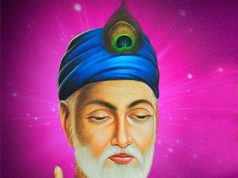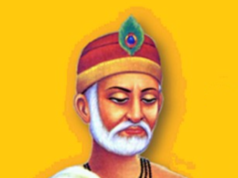 Uttar Pradesh elections shocked many and surprised most. While the post-mortem may persist there is need to see more objectively what really went behind this ‘modivating’ performance of the Bharatiya Janata Party (BJP). We are talking about UP because this State mattered most last time and will also matter most next time. The analysts may offer many reasons for division of the so called secular votes. From confusion of the minority votes to similar other gibberish that comes almost always after results of every election. But there is need to see the historical side of this story. UP was not won in a day. Nor was it the simple caste equation that mattered. It was much more than what simple poll arithmetic can explain. Some credit for this is also due to the old guard of BJP. It all started in the Eighties when the BJP had only two members in Parliament.
Uttar Pradesh elections shocked many and surprised most. While the post-mortem may persist there is need to see more objectively what really went behind this ‘modivating’ performance of the Bharatiya Janata Party (BJP). We are talking about UP because this State mattered most last time and will also matter most next time. The analysts may offer many reasons for division of the so called secular votes. From confusion of the minority votes to similar other gibberish that comes almost always after results of every election. But there is need to see the historical side of this story. UP was not won in a day. Nor was it the simple caste equation that mattered. It was much more than what simple poll arithmetic can explain. Some credit for this is also due to the old guard of BJP. It all started in the Eighties when the BJP had only two members in Parliament.
The party was on the verge of extinction. It was the post-Mandal era that the caste divisions of a fragmented Hindu society were further accentuated and a new power block called Other Backward Class started extracting its pound of flesh. This was the time when the BJP found itself in an unenviable position. It was now or never kind of situation. The challenge was to reinvent the Hindu society badly divided on caste lines. It was then that BJP came with the catchphrase that meant they will divide through caste and creed; we will unite in the name of Ram. For the Hindu psyche, facing a conditioned subjugation after centuries of alien rule this was just a feeble spark. But it did give some ray of hope for a revival of the Hindu identity. That was the time when for the young Hindu youth, a popular slogan was coined — “Garva se kaho hum Hindu hain — “be proud to proclaim that you are a Hindu’’.
This was the post-Independence generation that had been brought up in a milieu of a misplaced secularism, which was more like selective appeasement than neutrality. The march of the BJP and revival of assertive Hinduism that began then was slow but steady and subsequently paved the way for a BJP-led Government with noted Lohiaites and secular socialists like George Fernandes joining the government of what the western media called Hindu Nationalist Party. The turnaround was just beginning. Subsequent elections saw further rise in the Hindu assertiveness and with more and more youth joining the voting class the ancient religion got a modern boost. There was a time when the sign of modernity was being irreligious as the so called secularism was the fashion. Sporting atilak on the forehead was not correct socially and wearing saffron was a sign of backwardness. All that started to change as the Hindu youth embraced religious symbols with confidence. The participation in shravaini melas became fashionable. What happened in the recent UP elections is a continuation of that trend! With the Prime Minister Modi symbolising the assertive Hinduism, the UP results portend even more. So wishes are not horses and the BJP is here to stay. The 19th Century renaissance of Raja Ram Mohan Roy was just a reform having the endorsement of the west. But this Hindu renaissance is a kind of cultural nationalism that may once again pitch fork India to its pristine glory of the past. The Zeitgeist has arrived with Modi as the Renaissance Man.
By Pramod Pathak
The writer is a professor of management and public speaker. He can be reached at [email protected]
Courtesy: The Pioneer














